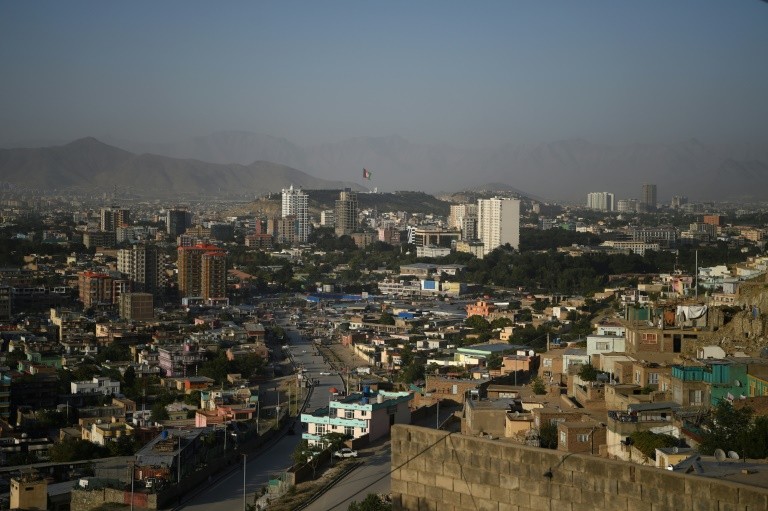The US and the Taliban are set to sign a historic agreement that would pave the way to ending America’s longest war, the bitter foes announced Friday, hours after Kabul said a week-long partial truce across Afghanistan would kick off this weekend.
If that so-called “reduction in violence” holds, it would mark a major turning point in the gruelling conflict and set the conditions for a deal that could, ultimately, pull US troops out after more than 18 years and launch Afghanistan into an uncertain future.
Both US Secretary of State Mike Pompeo and the Taliban issued statements saying they had agreed to sign the accord on February 29 in Doha, following the one-week partial truce.
“Upon a successful implementation of this understanding, signing of the US-Taliban agreement is expected to move forward,” Pompeo said, adding that negotiations between the Taliban and the Afghan government would “start soon thereafter”.
Afghanistan’s National Security Council spokesman Javed Faisal and Taliban sources earlier said the “reduction in violence” between US, Taliban and Afghan security forces would begin Saturday.
 AFP / Laurence CHUUS troops in Afghanistan
AFP / Laurence CHUUS troops in AfghanistanThe United States has been in talks with the Taliban for more than a year to secure a deal in which it would pull out thousands of troops in return for Taliban security guarantees and a promise to hold peace talks with the government in Kabul.
A reduction in violence would show the Taliban can control their forces and demonstrate good faith ahead of any signing, which would see the Pentagon withdraw about half of the 12,000-13,000 troops currently in Afghanistan.
Afghan President Ashraf Ghani said the partial truce would start at midnight Friday-Saturday.
“Our next steps on the peace process will depend on the evaluation of the week of the reduction in violence,” Ghani, who this week secured a second term in office, said in a televised address.
“The Afghan security forces will remain on active defence status during the week”.
In a statement, the Taliban said warring parties would “create a suitable security situation” ahead of a deal signing.
The Taliban’s political spokesman, Suhail Shaheen, separately tweeted that the agreement would see “all” foreign forces leave Afghanistan.
But a senior US administration official stressed that any withdrawal would be “conditions based.” And for now at least, the Pentagon wants to leave troops in Afghanistan on a counter-terrorism mission to fight jihadists such as the Islamic State group.
The reduction of US forces “is very much tied to delivery on the commitments that (the Taliban) have made,” the US official told reporters.
One Taliban source in Pakistan said that if an agreement was signed February 29, talks between the Taliban and the Afghan government, needed to cement a broader peace deal, would be slated to start on March 10.
The international community hailed the announcement, with NATO saying the deal could make way for “sustainable peace” in Afghanistan, while Russia labelled it an “important event” for the ending the war.
Pakistan, which helped facilitate the talks between the US and the militants, also welcomed the news.
Read Also: Afghan Crash: Jet Carrying 83 Crashes In Taliban Area
– Stand down –
In southern Kandahar province, which is seen as the Taliban’s heartland, one insurgent told AFP he had received orders to stand down.
But another Taliban commander based in Kandahar, Hafiz Saeed Hedayat, said he had only been ordered to refrain from attacking major cities and highways.
“This means maybe the violence will continue in the districts,” Hedayat said.
Taliban expert Rahimullah Yusufzai said the move signalled a wider change in thinking for both the Taliban and the US after years of fighting.
“Both sides have shown their commitment to sign the peace deal, and it’s a big development,” he said.
 AFP/File / THOMAS WATKINSUS soldiers look out over hillsides during a visit of the commander of US and NATO forces in Afghanistan in 2019
AFP/File / THOMAS WATKINSUS soldiers look out over hillsides during a visit of the commander of US and NATO forces in Afghanistan in 2019The US and the Taliban have been tantalisingly close to a deal before, only to see President Donald Trump nix it at the eleventh hour in September.
Any truce comes fraught with danger, and the attempt to stem Afghanistan’s bloodshed is laced with complications.
Warring parties could also exploit a lull to reconfigure their forces and secure a battlefield advantage.
The reduction in violence is “still just the first step”, Andrew Watkins, a senior analyst with the International Crisis Group, told AFP.
“Those talks will be a tough road of their own, but are the best avenue to peaceful settlement to Afghanistan’s conflict.”
– ‘Bringing peace’ –
On Thursday, the deputy leader of the Taliban said the insurgents are “fully committed” to a deal with Washington.
“That we stuck with such turbulent talks with the enemy we have fought bitterly for two decades, even as death rained from the sky, testifies to our commitment to ending the hostilities,” Sirajuddin Haqqani wrote in an opinion piece in the New York Times.
Haqqani is also head of the Haqqani network, a US-designated terror group that is one of the most dangerous factions fighting Afghan and US-led NATO forces in Afghanistan.
Since the US-led invasion of Afghanistan after the September 11, 2001 attacks, America has spent more than $1 trillion in fighting and rebuilding in Afghanistan.
About 2,400 US soldiers have been killed, along with unknown tens of thousands of Afghan troops, Taliban fighters and Afghan civilians.
AFP

